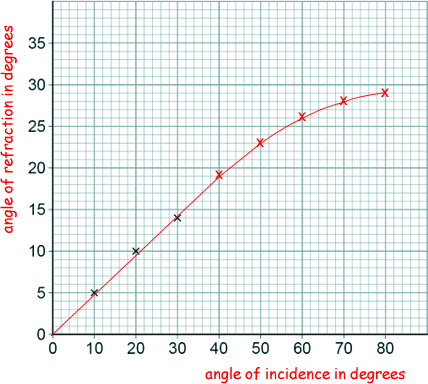GCSE questions on refraction and TIR Q12. Nick used a ray box to shine a ray of light through air into a glass block. He investigated how the angle of refraction varied with the angle of incidence. The table below shows his results.
(a) Describe a method Nick could have used to obtain such results. Your answer may include a labelled diagram.
It is not just a 'tick fest' - but a marker does look to see how many relevant points you have made, then considers how you have strung them together to put your answer into a 'level'
Indicative content - some indicative content could be indicated within a labelled diagram:
[6 marks] (b) Here is an incomplete graph of the results:
Complete the graph - using data from the table.
[4 marks] (Total 10 marks) |
Follow me...
|






